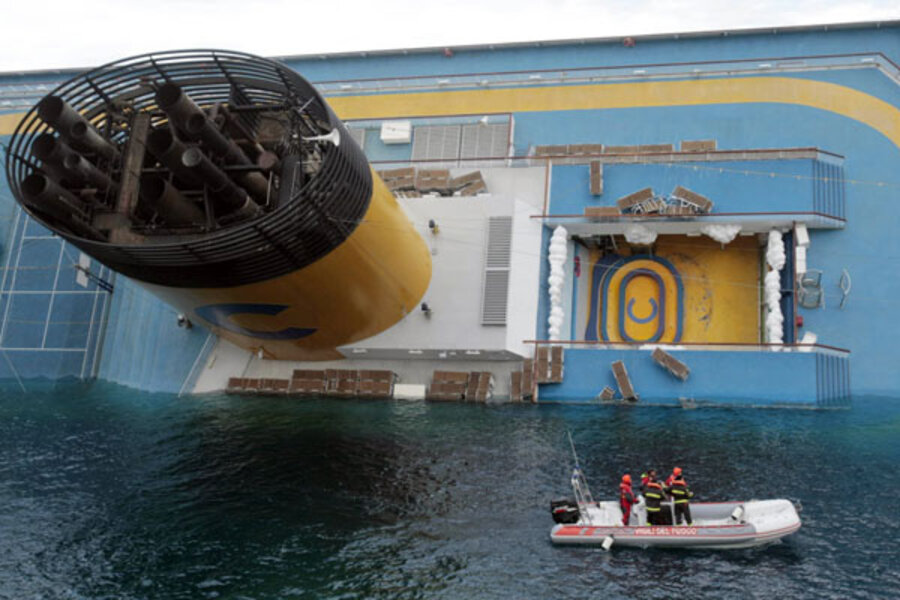In 2007 another cruise ship ran aground off Santorini Island in the Greek isles. The vessel went close to the island’s picturesque cliffs to give the passengers a good view, but struck rocks and sank.
“Shoulda, coulda, woulda,” says Mr. Loh. “You go close but you don’t go too close."
Stopping a boat or quickly changing course to avoid an immediate collision threat is not a realistic maneuver for most cruise boats, says Mr. Loh. “You have to understand when you’re at sea and in a large vessel like this, the bridge is extremely high up in the air, and you can’t see the entire vessel or over the side of the vessel … and you can’t stop on a dime”
“In order for you to avoid [a collision] requires a lot of prior planning to figure out where you are at any particular time,” Loh says. “If you’re really close [to land] you have to be in a position that no matter how much momentum you have at that time the forces of inertia could not possibly put you in a position to rub up against a large rock.
“Which means you have to be fairly far away to avoid [collision],” he says citing a full boat length, at least, from any known hazard.

Gregorio Borgia/AP
Italian firefighters scuba divers approach the cruise ship Costa Concordia leaning on its side, the day after it ran aground off the tiny Tuscan island of Giglio, Italy, Sunday.




